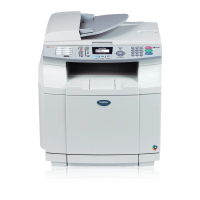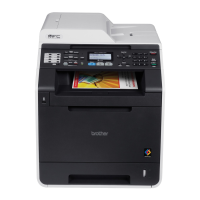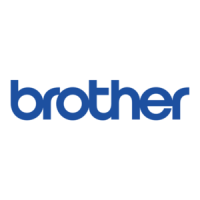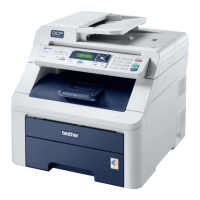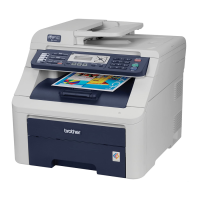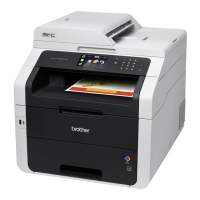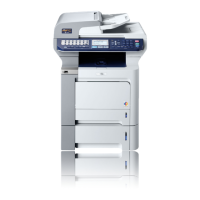
 Loading...
Loading...
Do you have a question about the Brother MFC-9440CN and is the answer not in the manual?
| Print technology | Laser |
|---|---|
| Maximum resolution | 2400 x 600 DPI |
| Time to first page (color, normal) | 16 s |
| Print speed (black, normal quality, A4/US Letter) | 20 ppm |
| Scan to | e-mail, file, image, OCR |
| Input color depth | 48 bit |
| Copier resize | 25 - 400 % |
| PC free copying | Yes |
| Maximum copy resolution | 1200 x 600 DPI |
| Maximum number of copies | 99 copies |
| N-in-1 copy function (N=) | 2, 4, 9, 16 |
| Copy speed (black, normal quality, A4) | 16 cpm |
| Faxing | Color faxing |
| Fax memory | 400 pages |
| Modem speed | 33.6 Kbit/s |
| Fax speed dialing (max numbers) | 300 |
| Total input capacity | 250 sheets |
| Total output capacity | 150 sheets |
| Multi-Purpose tray input capacity | 50 sheets |
| Auto document feeder (ADF) input capacity | 35 sheets |
| Internal memory | 64 MB |
| Maximum internal memory | 576 MB |
| Sound power level (standby) | 30 dB |
| Sound pressure level (printing) | 54.5 dB |
| Display | LCD |
| Market positioning | Business |
| Non-ISO print media sizes | Executive (184 x 267mm), Folio (media size), Legal (media size), Letter (media size) |
| ISO A-series sizes (A0...A9) | A4, A5, A6 |
| ISO B-series sizes (B0...B9) | B5, B6 |
| JIS B-series sizes (B0...B9) | B5 |
| Maximum ISO A-series paper size | A4 |
| Font styles | 66 Scaleable fonts, 12 Bitmap fonts, 13 Barcodes |
| Dimensions (WxDxH) | 432 x 487 x 482 mm |
| Networking features | 10/100 Base-TX |
| All-in-one functions | Copy, Fax, Scan |
| Color all-in-one functions | copy, fax, print, scan |
| Compatible operating systems | Windows Vista/XP/Home/2003/2000 Mac OS X 10.2.4 or greater Linux |
| Standard interfaces | USB 2.0 |
| Power consumption (standby) | 95 W |
| Power consumption (PowerSave) | 28 W |
| Power consumption (average operating) | 495 W |
| Package weight | 38600 g |
| Sustainability certificates | ENERGY STAR |
| Digital sender | No |
